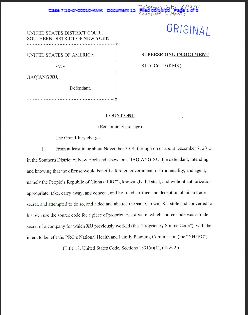Russian Submarines Operating Near Trans-Oceanic Internet Cables
Multiple news outlets have reported that Russian submarines have been cruising around in the vicinity of undersea cables, according to the NY Times, the Washington Post, and The Register. There is some speculation that this harkens back to Cold War era tactics of intimidation and demonstrations of force as Russia continues to assert its presence on the World Wide stage. Specifically, the New York Times reported that Russia’s actions with its submarine fleet are spreading fears that Russia may be positioning itself should the need arise to cut undersea cables. The Times article indicates that the most far-reaching impact to the United States would occur if Russia severed fiber-optic cables in deep-sea areas that are difficult to access, making remediation extremely challenging. The Times points out that there is no evidence of any Russian cable-cutting; however the positioning of submarines in these areas increases American and NATO concerns over Russia’s increasingly global military presence.
Russian Relay Satellite is parked between two U.S. INTELSAT Satellites
Additionally, the BBC recently reported that a Russian satellite which was launched into orbit in September 2014 has been positioned between two U.S. International Telecommunications Satellite Organization (INTELSAT) satellites, causing concern within the U.S. BBC reports that Ivan Moseyev, the head of Russia’s Space Policy Institute claims the satellite is merely a relay satellite intended to send signals from spacecraft (such as the International Space Station ISS)) to Earth and also between satellites. Of course, one wonders why a relay satellite would be positioned between two U.S. communications satellites unless, perhaps it was intended to relay transmissions from the INTELSAT satellites back to Earth (i.e. Russia)?
U.S. Underwater Operations
The concern over Russian submarines operating near fiber-optic cables is interesting when contrasted with an August report in The Week which stated that after the Snowden revelations in 2013, there was widespread speculation that the U.S. was using submarines to tap into undersea cables. The assertion being that the Seawolf-class submarine, the U.S.S. Jimmy Carter had been modified specifically to tap undersea communication cables. Reportedly, the Jimmy Carter’s midsection was extended 100 feet in order to create a floodable chamber that would allow ingress/egress from the submarine while at deep-sea operating depths. Of course, the use of submarines to intercept and gather information is not a novel idea. The Washington Post reported that the first use of submarines to “tap” cables was done back in the 1960s in Operation Ivy Bells, the U.S. sub, Halibut was used to located and tap undersea communication lines in the Sea of Okhotsk. Furthermore, according to Richard A. Clarke’s book, Cyber War: The Next Big Threat and What to do About it, operations such as Holystone involved the use of submarines to perform a multitude of reconnaissance and intelligence gathering tasks (dating back to the 1960s). Additionally, The Week’s article states that in 1980, a former NSA employee, Ronald Pelton sold information to the Soviet Union, about the U.S. spy subs use of clamp-like devices on undersea cables to record passing signals (Pelton was subsequently convicted and remains in federal prison).
My Opinion:
Secrecy and deniability are the hallmarks of clandestine operations. What better theater to perform a cloak-and-dagger operation than thousands of feet under the surface of the ocean where sunlight does not penetrate and there are no wandering eyes to worry about. For the Nation-State that is already heavily invested in espionage and the support therein, adding a deep-water submarine to the toolkit makes perfect sense. The ability to perform signals intelligence (SIGINT) on undersea cables could create a treasure trove of data from which significant intelligence information could be gleaned. With fibre-optic cables stretched across the ocean floors connecting continents with one another, is it really any surprise that the information in these cables would be targeted by intelligence gathering organizations? The only surprise here is that media outlets seem to be of the belief that SIGINT is some dark, new presence, when in reality SIGINT has existed at least since Marconi’s first wireless sets were put into service at the end of the 19th century.






Leave a Reply